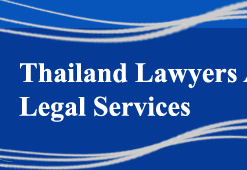



    |
|
| |
|
Open Regionalism and Deeper Integration: The Implementation of ASEAN Investment Area (AIA) and ASEAN Free Trade Area (AFTA)
Part 9
However, the AIA goes much further than these short term measures. It binds the member countries to eliminate investment barriers, liberalise investment rules and policies, grant national treatment and open up industries, initially in the manufacturing sector and later to cover other sectors under the agreement. Under the Framework Agreement on the AIA, national treatment will be made fully available within six months after the date of signing (7th October 1998) of the Agreement
(64)for ASEAN investors(65)in the manufacturing sector, subject to certain exclusions(66). These exclusions will be progressively phased out(67)by the six ASEAN countries(68)by the year 2003 instead of waiting for 2010(69)as initially agreed. Myanmar will also join the six ASEAN countries to fully implement the obligation in 2003 instead of the year 2015. Vietnam and Laos will exert their best efforts to achieve the early realisation of AIA in 2010 instead of 2013 and 2015 respectively. The AIA aims to promote the freer flow of capital, skilled labour and professionals, and technology among the member countries.In relation to the AICO Scheme, ASEAN countries agreed to waive the 30% national equity requirement under the AICO Scheme during the period 1999-2000 to respond to the AIA short term measures. Moreover, the AIA arrangement affirmed their commitment to the 1987 ASEAN Agreement for the Promotion and Protection of Investment and its 1996 Protocol to enhance investor confidence in investing in ASEAN. The AIA also facilitates the implementation of the ASEAN Free Trade Area towards the ultimate goal of sustaining economic growth and development in all members, which would be a crucial turning point for ASEAN.
The AIA is a step forward to a higher level of regional integration. However, since ASEAN member countries are members of GATT/WTO, it poses the question about its generalised liberalisation commitment to other countries, or in other words how ASEAN balances its intra-regional integration with global liberalisation. In AIA, the investment liberalisation scheme combines the strengthening of regional integration by intra-ASEAN investment liberalisation with generalised liberalisation by gradually opening up ASEAN investment to all investors. This will be discussed in the next section, which focuses on the legal aspects of the AIA Agreement and its implementation.
Legal Aspects of the AIA Agreement and its Implications
Provisions under the AIA, especially the extension of national treatment
(70)and opening up of industries, greatly modify the previous constraints on foreign investors relating to these significant issues: restricted areas of investment, restricted entry and establishment, restricted foreign shareholding/equity, and other screening processes as well as controls on the operation of foreign investors(71). These are the techniques employed by ASEAN countries in restricting the entry and establishment of foreign investors, or the screening of foreign investors into their territories. The Framework Agreement on AIA mainly focuses on liberalising such constraints to assure the 'open door' policy of ASEAN to a greater extent than ever before. Therefore, the decision to establish the ASEAN investment area as a single investment area that needs to eliminate all such barriers and constraints to investors, regardless of nationality and sources of investment, is a radical move toward investment liberalisation and closer economic integration in the region. Consequently, national treatment(72)will be granted concurrent with the opening up of industries(73)to dismantle the main barriers to foreign investment in ASEAN countries. Even though the timetable for implementation of NT provides a 10-year differential between ASEAN investors and non-ASEAN investors, it is set as a transitional period for ASEAN countries to prepare their readiness for fully opening up the door, shifting to another level of liberalisation.From a legal point of view, this move shows that ASEAN countries concertedly restrain their discretion and refrain from fully exercising their sovereign rights to control and screen foreign investment that previously were jealously guarded by all ASEAN countries. States, especially developing countries, have traditionally preserved their absolute rights, recognised in international law, to control the entry and establishment of foreign investors within their territory (Muchlinski, 1995: chapter 6; UNCTAD, 1999: 3). This policy change in ASEAN reflects the balance of interest generated by economic integration and the surrender of economic sovereign rights of the ASEAN member countries. This is the price to be paid for encouraging intra-regional economic development by liberalising investment. This further implies that the policy options and choice of the regulatory regime of ASEAN are centrally based on balancing the interdependence of the regional and global economic environment. However, the extent to which the AIA would fruitfully enhance intra-ASEAN preferential treatment by implementing the mutual National and Most-Favoured-Nation treatment among them, the extent to which AIA is generalised liberalisation, and what the balance is between them, will be analysed below.
_______________________________________________________________
(64)Initially, Art. 4 of the AIA agreement provided that national treatment is extended to ASEAN investors by 2010 but the "Bold Measures" agreed upon by the ASEAN Leaders at the sixth ASEAN Summit in December 1998 accelerated the time frame from 2010 to within 6 months after the date of signing the agreement or the date the agreement enters into force. Art. 21 of the Framework Agreement on AIA provided that "This Agreement shall enter into force upon the deposit of instruments of ratification or acceptance by all signatory governments with the Secretary-General of ASEAN. The signatory governments undertake to deposit their instruments of ratification or acceptance within 6 months after the date of signing of this agreement. This means national treatment extended to ASEAN investors is fully implemented immediately when the agreement enters into force, but subject to the exception provided for under the agreement.
(65)In defining an ASEAN investor, a liberal definition has been adopted: an ASEAN investor is defined as equal to a national investor in accordance with the equity condition requirement of the respective host member countries.
(66)The Council tasked the Coordinating Committee on Investment (CCI) to begin work on AIA, especially on the submission of the Temporary Exclusion List and Sensitive List for opening up of sectors for investment and the granting of National Treatment. The initial package of TEL and SL were be submitted within six months after the signing of the AIA Agreement for opening up investment in manufacturing sector for ASEAN investors. The other sectors would be gradually open and all industries would be opened by the year 2003 for ASEAN investors and by the year 2010 for all investors. Therefore, even though AIA provided for the opening up of all industries for investment to ASEAN investors by 2003 (initially 2010) and to all investors by 2010 (initially 2020), they are subject to the Temporary Exclusion Lists (TEL) and Sensitive List (SL).
(67)The implementation of the Framework Agreement will be reviewed every two years to ensure that the objectives of the AIA are met.
(68)Brunei, Indonesia, Malaysia, Philippines, Singapore, and Thailand.
(69)Art. 4 (a) of the Framework Agreement on AIA.
(70)See UNCTAD (1999c) National Treatment: UNCTAD Series on issues in International Investment Agreements. New York and Geneva: United Nations Publication.
(71)For detailed analysis on control of inward investment by host states, see Muchlinski, 1995: chapter 6, pp. 172-203.
(72)Art.4 (b) of the Framework Agreement on ASEAN investment Area.
(73)Art. 7: Opening up of Industries and National Treatment, Framework Agreement on the ASEAN Investment Area.